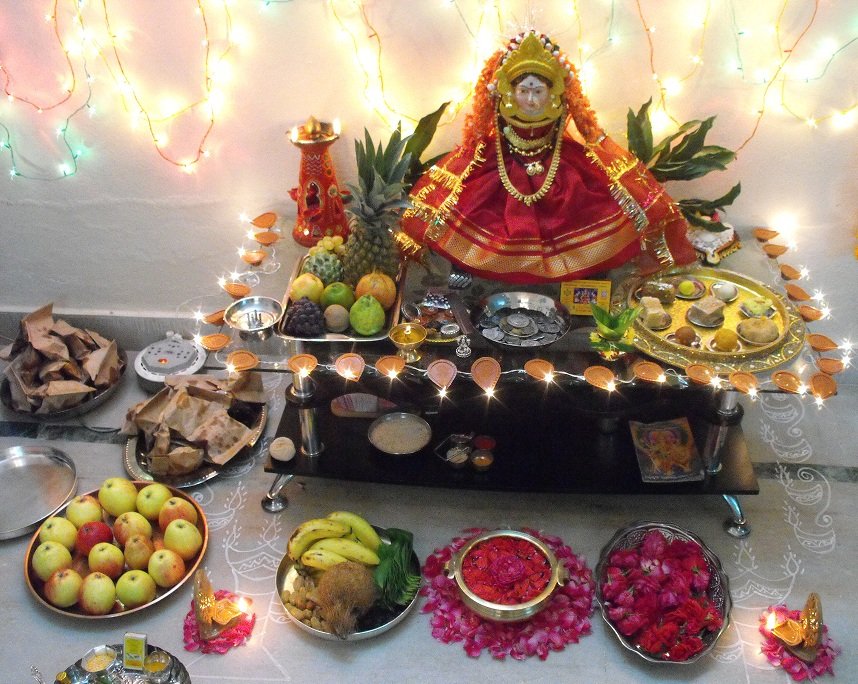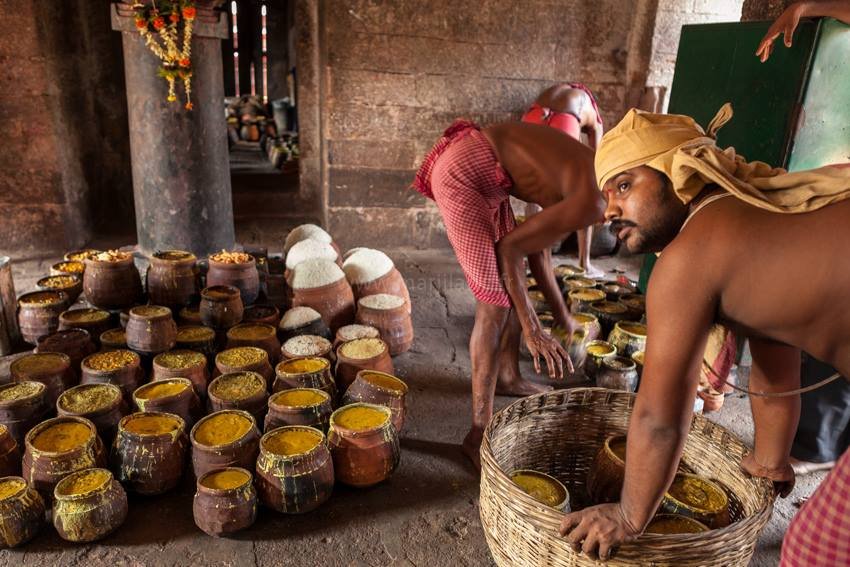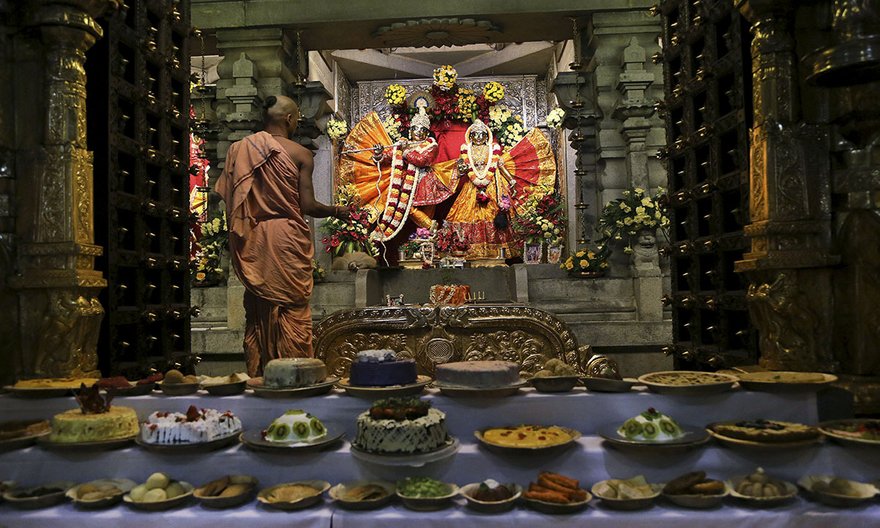Third (and this can sometimes be tough), we must not taste the food before it is offered to God. The preparing of prasada is done as an active devotional meditation. So the goal is to prepare delicious foods, not with our own satisfaction in mind, but thinking only of the satisfaction of God. Therefore, He should be the first to taste the fruits of our labors.
Posted byThe EditorSep 21, 2015Articles on Hinduism3,753views
If we can follow all of the above guidelines and, most importantly, maintain a meditative consciousness of love and devotion for God as we are performing these activities, then God will gladly accept our offering.
The Rice Harvest at Dayalu Babas Ashram
Five Years of Food Distribution in Andhra Pradesh by the…
Benefits of Bitter Gourd (Karela) Juice
In Hinduism, food plays an important role in rituals and worship, and the food offered to the gods is called prasada. The Sanskrit word prasada means mercy, or the divine grace of God.
Your email address will not be published.Required fields are marked*

First, God only accepts purely vegetarian offerings offerings that are acquired without pain and suffering on the part of any creature. So, we have to strictly avoid cooking any meat (including chicken; a bird is not a vegetable!), fish and eggs.
While eating the prasada, please always be conscious and aware that you are partaking in the special grace of God. Eat with reverence, and enjoy!

Food Distribution at Urban Deprived Residential Hostel
15 Most Amazing Predictions for Kali Yuga from the Bhag…
Receive our daily email newsletter on Hinduism, Yoga, Meditation, Ayurveda and Natural Healing.
We can make the preparing of food, the offering of food to God, and the eating of the food offered, into a powerful devotional meditation. If, as a meditative discipline, we can offer our food to God with devotion before eating it, not only are we not implicated in the karma involved in acquiring the food, but we can actually make spiritual progress by eating the offered food. Our devotion, and Gods grace, subtly transforms the food offered from material nutrition to spiritual mercy or prasada.
5 Differences Between Ashtanga Yoga and Hatha Yoga

The food on the the plate should be re-merged into the food in the pots. Having thanked the Lord for accepting your offering, the prasada can now be eaten. The food should also be eaten with meditative awareness, peacefully and respectfully.
Was the Christian Vatican Originally a Temple to Lord S…
Update on Building Rooms for Sadhus in the Forests of Odisha
15 Health Benefits of the Peepal Tree
Sri Chaitanya Baba Enters Maha Samadhi at Tiger Cave Ashram
Food Distribution in Chinnapuram Village, Andhra Pradesh
Receive our daily email newsletter on Hinduism, Yoga, Meditation, Ayurveda and Natural Healing.
Receive our daily email newsletter on Hinduism, Yoga, Meditation, Ayurveda and Natural Healing.
Rare Pictures of Prime Minister Narendra Modi Living as…
Do you have a spiritual question on Hinduism? Please write to us.
Save my name, email, and website in this browser for the next time I comment.
Receive our daily email newsletter on Hinduism, Yoga, Meditation, Ayurveda and Natural Healing.
Keeping this meditative goal in mind, it is important to have an atmosphere in our kitchen that is conducive to creating a meditative and devotional state. We should be in a calm, peaceful and contemplative frame of mind while preparing food for God, thinking to ourselves as we prepare the food that we are acting for Gods satisfaction, and not just our own.
It is helpful if you have an altar already set up somewhere in your home, apartment or dorm. On this altar should be either a sacred image or a picture of God in any of His sacred forms. For example, an image of any of His incarnations Rama, Krishna, Narasingha or any other form, such as Srinathaji or Venkateshvara, is fine. In addition, you can include images of your guru, saints, or other devas or devis on your altar Durga, Ganesha, Sarasvati, etc. Images of God, however, should be the focal-point of any altar used for meditation. If you dont have an altar, then placing a simple image of God somewhere special will do.
Receive our daily email newsletter on Hinduism, Yoga, Meditation, Ayurveda and Natural Healing.
Trying to get in Shape? Cinnamon is the Superfood That Can Help
After chanting this mantra for some time, then remain in silent prayer for 5 10 minutes and request the Lord to accept your offering. After you have offered the food in this way, the food that you have cooked is now sanctified and considered to be prasada, food transformed into the grace of God. By partaking in such food, we show our devotion to God, and thus make spiritual advancement.
Second, we cant offer any onions, garlic or mushrooms. This may seem like an odd proscription; but the Vedic scriptures, as well as the ancient natural medicinal system of Ayurveda, explain that these foods excite the more passionate elements of the human psycho-physical constitution.
When the food is ready, take a sampling of each preparation, along with a glass or cup of water, and place them all on a special plate that is used only for offering food to God. This plate must never be used for any other purpose than offering food in Prasada-Meditation. Place the plate of food before the sacred image. Offer a little incense to God. Then, in a meditative and devotional state of mind, sit with eyes closed in meditation and recite several sacred mantras. One such mantra which is highly effective is: Om Namo Narayanaya.
Before we can offer any food to God, however, we must first follow some important guidelines while preparing the food.
Yoga and Meditation Reduce Cancer and Depression by Reversing DNA
Finally, as in any spiritual endeavor, it is important to maintain a high standard of cleanliness while preparing, cooking, and offering the food. The kitchen, utensils and foods used should be clean. We ourselves also should be clean and bathed before beginning Prasada-Meditation, or any other meditation for that matter.
Help us spread awareness of Hinduism by supporting IndiaDivine on Patreon.